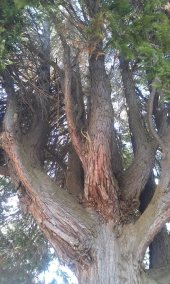
 4
4




"And they'll carry our dreams to the stars from the canyons of Mars." http://answersingenes.blogspot.co.uk/2012/06/one-way-to-mars.html Tw: @shanemuk
 1
1






"And they'll carry our dreams to the stars from the canyons of Mars." http://answersingenes.blogspot.co.uk/2012/06/one-way-to-mars.html Tw: @shanemuk
 2
2




Moderator, Treatment Free Beekeepers group on Facebook.
https://www.facebook.com/groups/treatmentfreebeekeepers/





 1
1





"And they'll carry our dreams to the stars from the canyons of Mars." http://answersingenes.blogspot.co.uk/2012/06/one-way-to-mars.html Tw: @shanemuk
 2
2




Moderator, Treatment Free Beekeepers group on Facebook.
https://www.facebook.com/groups/treatmentfreebeekeepers/





 7
7




Dave's SKIP BB's / Welcome to Permies! / Permaculture Resources / Dave's Boot Adventures & Longview Projects


















 ). You're still in high school and doing all this along the way? Good work - sounds like the next generation of permaculture is in excellent hands! Keep it up
). You're still in high school and doing all this along the way? Good work - sounds like the next generation of permaculture is in excellent hands! Keep it up 
"And they'll carry our dreams to the stars from the canyons of Mars." http://answersingenes.blogspot.co.uk/2012/06/one-way-to-mars.html Tw: @shanemuk
 3
3




Dave's SKIP BB's / Welcome to Permies! / Permaculture Resources / Dave's Boot Adventures & Longview Projects















 1
1




 3
3




 3
3




 2
2




Shane McKee wrote:There is a lot of talk about weeds as indicators of soil condition-Shane
Many thanks
Steve Marquis
Permaculture Teacher and Mentor
Climate Action Educator
 4
4




Dave Bross wrote:Another book on weeds from them:
https://bookstore.acresusa.com/collections/spotlight/products/weeds-and-why-they-grow
 4
4




Weeds are becoming a more and more appreciated component of gardening. We have been reintroduced to eating the weeds, with things like dandelion leaves becoming a niche crop. Also, we are encouraging plants that, up until recently, were viewed as weeds (dynamic accumulators like comfrey and pioneering legumes) to revitalize our soils. And, many gardeners are once again celebrating weeds as a means of reading the soil.
Invasive plants are Earth's way of insisting we notice her medicines. Stephen Herrod Buhner
Everyone learns what works by learning what doesn't work. Stephen Herrod Buhner
 4
4





| I agree. Here's the link: http://stoves2.com |




